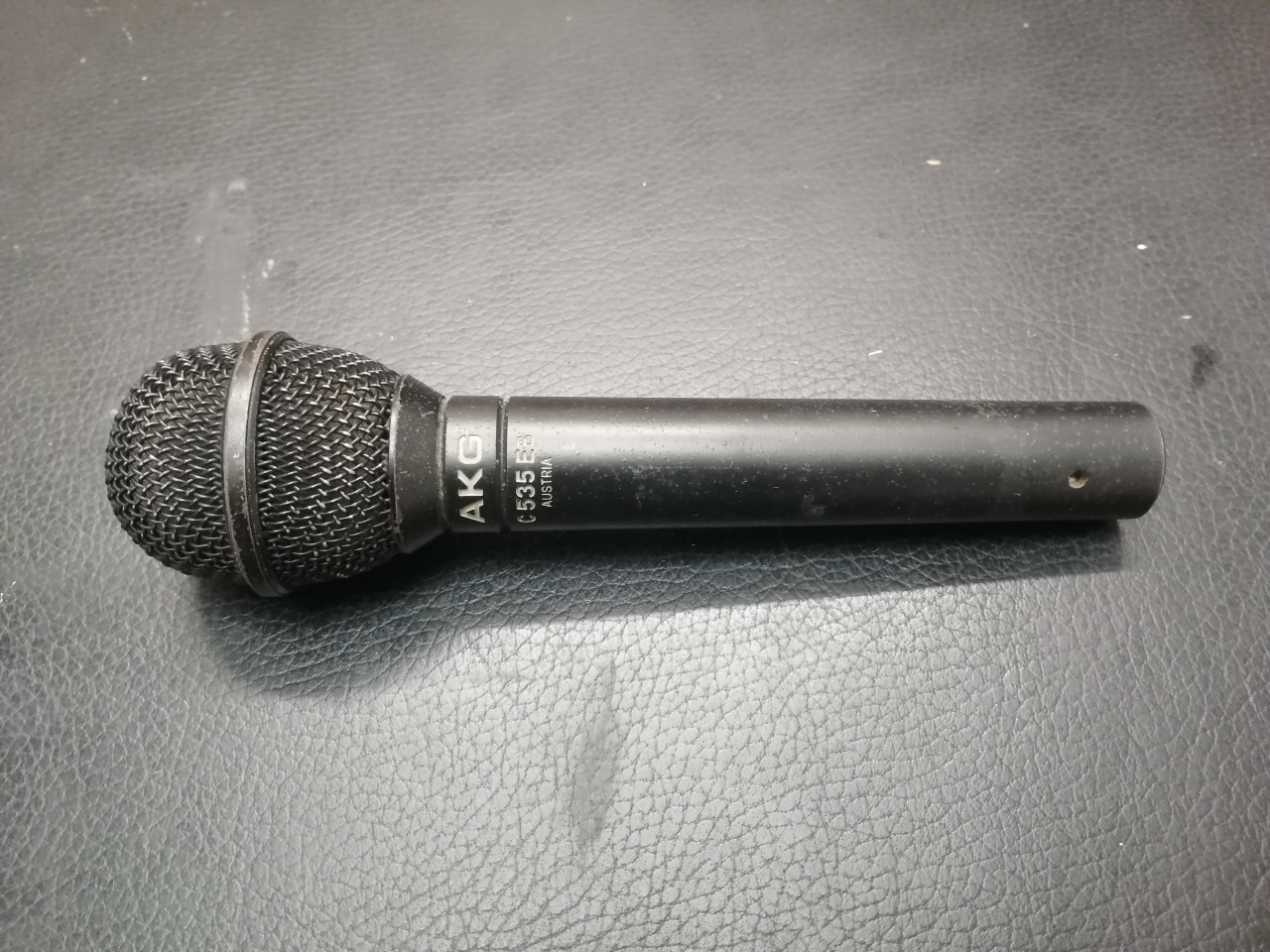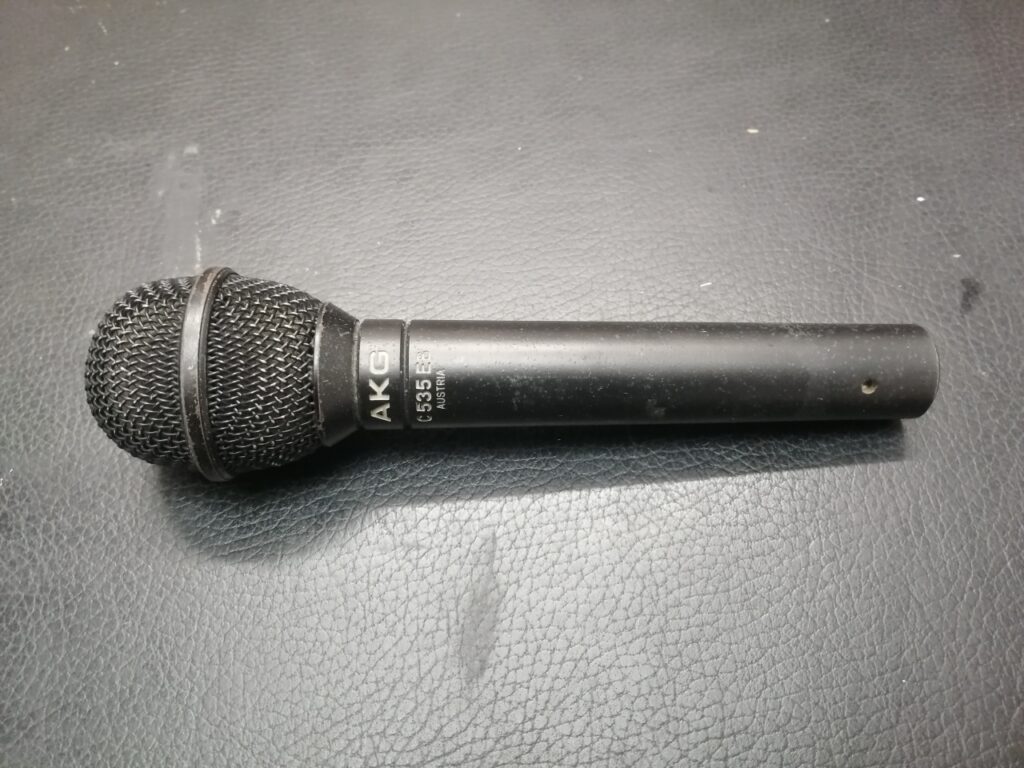
Since we started these posts we have only featured dynamic mics. This week is the turn of our first condenser mic, pulled at random, the AKG C535 EB. This is an unusual post to write as this is not a mic we use very often. However with our industry on hold for nearly a year it seems like a good way of refreshing our knowledge of all our mics.
The AKG c535 is a cardioid condenser that is just at home in a studio or live. Its flexibility comes from an extremely flat frequency response and several pad/filter options. The c535 frequency graph displays why this is used as a vocal mic. 4 switch settings allow for various low cut features including one specifically designed for vocals. The c535 brings all the usual features one would expect from a condenser. This makes it great on hi-hats, stringed instruments and anything that requires high detail. The familiarity and ease of the sm58 is the reason we have neglected this quality mic. We will use this mic more often after lockdown
What is the difference between a dynamic and condenser microphone?
The difference comes down to the system used inside the mic to convert sound waves into an electrical signal. A dynamic mic has a diaphragm connected to a magnet surrounded by a coil of wire. As the diaphragm moves the magnet through the coil, an electrical charge is induced which is sent out down the cable. In a condenser the diaphragm and backplate is electrically charged. As the diaphragm vibrates, the electrostatic charge between the two plates changes and creates the electrical signal. The charge required for these plates comes from the mixing desk in the form of phantom power. Future posts will cover this in more detail

